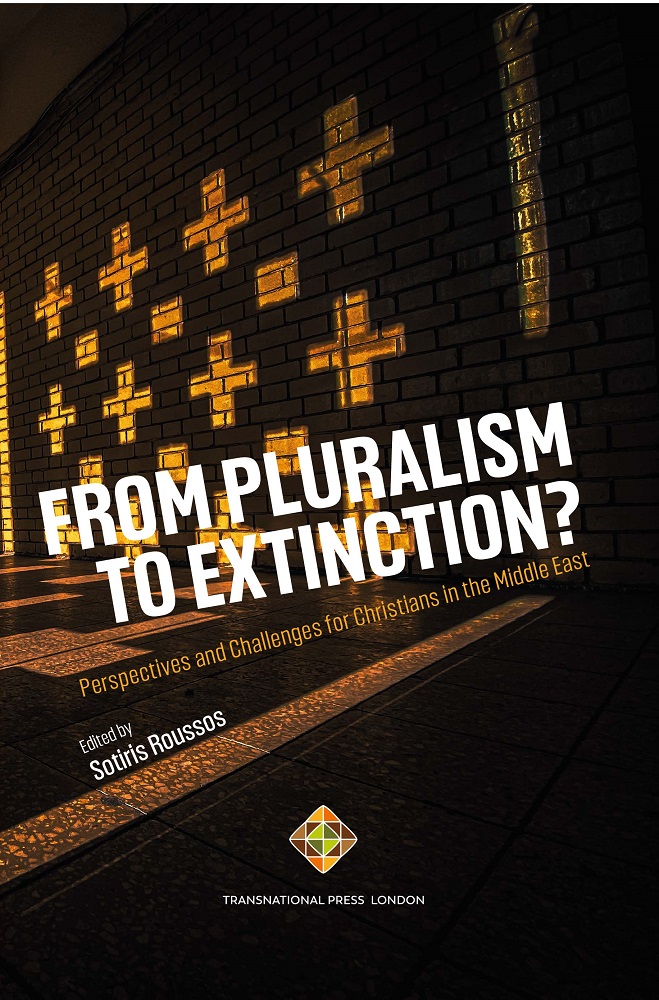Christianity in The Modern Middle East: Current Situation and Future Challenges
Christianity in The Modern Middle East: Current Situation and Future Challenges
Author(s): Anthony O’Mahony
Subject(s): Christian Theology and Religion, The Ottoman Empire
Published by: Transnational Press London
Keywords: Christianity; The Modern Middle East; Current Situation; Future Challenges; Christian; Middle East; Ottoman Empire;
Summary/Abstract: Christian presence across the Middle East (West Asia) region is facing a variety of acuate challenges which are increasingly considered as existential. In terms of history the current situation might be considered similar to that faced by Eastern Christianity as a consequence of the geopolitical changes in the late period of the Ottoman rule including World War I, the Armenian Genocide, the Syriac Sayfo, and the displacement of the entire Eastern Orthodox population during the early 1920’s with the establishment of the modern states of Greece and Turkey. With the collapse of Ottoman Empire, the wider geopolitical and ecclesial situation significantly changed across Europe, Russia and the former Ottoman territories directly having an impact upon Eastern Christianity this included the Bolshevik Revolution which brought about the near destruction of the Russian Orthodox Church. This in turn severed the historic ties with Eastern Churches in the Middle East until after World War II. In the aftermath of these traumatic events determined efforts were made by the Christian communities in the region to rebuild the Eastern Orthodox, Armenian and Syriac and the Eastern Catholic churches in the context of new nation-states and mandatory governance in the interwar Middle East. World War II followed by the imposition of Communist rule in the Eastern European states and the Cold War impacted upon all Eastern Christians in the Middle East. Regional conflict across the Middle East also felt upon all Christians from the Arab–Israeli conflict in the post war era to conflict in Iraq and Syria, the effects of war have challenged Christianity in the Middle East to the point that many are concerned for its survival. This has included the forced displacement and emigration of Christian from across the entire region. It is critical to understand the dynamics of Christian emigration from the Middle East, the first phase of which began in the later part of the nineteenth century and continued until World War I. During that time, thousands of Christians left the Ottoman Empire in search of economic opportunities, including greater religious freedom and political tolerance. After World War II, socio-economic factors continued to influence the emigration of Christians and to a lesser extent, of non-Christians. In the post-independence period, from the late 1940s to the present time, Christian emigration continued to rise, primarily due to economic insecurity but also due to political instability and military conflicts: the 1948 Palestinian–Israeli conflict, the Lebanese Civil War (1975–1990), the Islamic revolution in Iran, and the series of wars in the Persian Gulf—the Iran–Iraq War (1980–1989), the First Gulf War (1990–1991), and the US lead invasion of Iraq, which began in 2003. To this should be added the Russian Federations invasion of the Ukraine in February 2022 which has an impact on the Eastern Christian churches in the Middle East sharpening relations between the Patriarchates of Constantinople and Moscow and allowing for an increasing influence by the various states in the region on ecclesial affairs in a changing geopolitical situation. Patriarch Sako of the Chaldean Catholic Church centred on Iraq stated “The world economic crisis and the global situation marked by the Russian military invasion in Ukraine are also having serious effects on the network of charitable and social works promoted by the Churches in the Middle East. This circumstance is driving the exodus of Christians from the region of the world where Jesus was born, died and rose again.”
Book: From Pluralism to Extinction? Perspectives and Challenges for Christians in the Middle East
- Page Range: 169-204
- Page Count: 36
- Publication Year: 2023
- Language: English
- Content File-PDF

